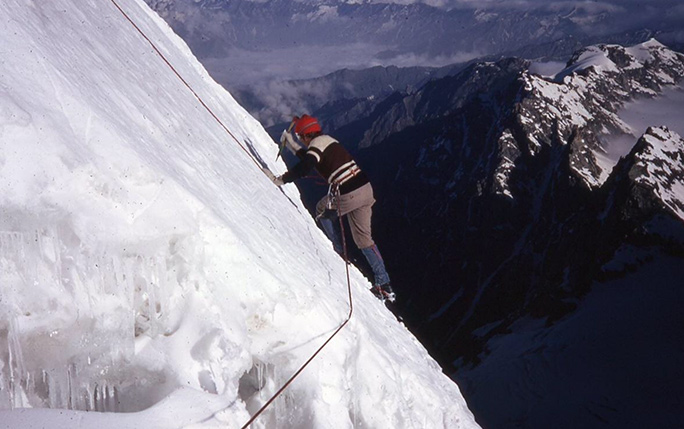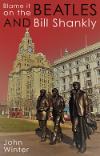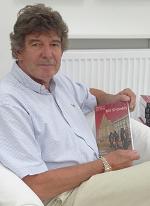Aiming High: The first team to climb the west peak of Indrasan

In 1971, alumnus Dr John Winter (MBChB 1969) took part in an expedition to the Himalayas to make the first ascent of the West Ridge of Indrasan, one of the most difficult and dangerous peaks in the region. Here is his story.
As a 1969 Medical School graduate, I read with particular interest the article by Dr Ken Hedges in the latest Alumni magazine about his Arctic Ocean transit that same year.
I did something a little similar in 1971 when I was Medical Officer on a successful attempt by a Liverpool-based team, sponsored by The Mount Everest Foundation and the Daily Express, to make the first ascent of the West Ridge of Indrasan, a 21,000 ft. Himalayan peak.
There were seven of us on the climbing team, six from UK and one New Zealander. 52 local porters were needed to transport all the equipment on the three day hike to Base Camp, and we also hired two local, high-altitude porters whose job was to assist us with load-carrying to the upper camps on the mountain. A local cook remained at Base Camp.

The weather during the climb was generally quite kind to us although, as is always the case in the highest mountains, we experienced quite a few storms, with high winds and heavy snow at altitude. Indrasan is known locally as ‘The Throne of The Thunder God’ and not without good reason. The worst of the weather occurred towards the end of our time on the mountain as the monsoon clouds built up in the latter part of June.
I had never previously done any sort of mountain or rock climbing, and the stand-out memory from the expedition was the sheer scale, beauty and majesty of the Himalayas. There was a constant awareness that many of the peaks surrounding Indrasan were higher than Mont Blanc but, because they were so numerous, they did not even merit a name.
 The story of the Indrasan expedition, which included a journey by lorry from Liverpool to India with all the climbing equipment and supplies, passing along what became ‘The Hippy Trail’ through relatively unvisited places such as Iran and Afghanistan, and the legendary Khyber Pass, is told in my book, Aiming High – Overland to the Himalayas 1971. Most of the book was written soon after my return to the UK but because of the demands of a medical career the manuscript was not finalised and published until after I retired in 2014. It is now out of print but second hand copies can still be obtained on sites such as Amazon. There are plans to republish it very soon as an e-book.
The story of the Indrasan expedition, which included a journey by lorry from Liverpool to India with all the climbing equipment and supplies, passing along what became ‘The Hippy Trail’ through relatively unvisited places such as Iran and Afghanistan, and the legendary Khyber Pass, is told in my book, Aiming High – Overland to the Himalayas 1971. Most of the book was written soon after my return to the UK but because of the demands of a medical career the manuscript was not finalised and published until after I retired in 2014. It is now out of print but second hand copies can still be obtained on sites such as Amazon. There are plans to republish it very soon as an e-book.
Researching altitude sickness
In 1974, a couple of years after returning from Indrasan, I was contacted by a fledgling organisation in Nepal called the Himalayan Rescue Association. It had been set up to look into the problem of altitude sickness which was causing problems for trekkers to Everest Base Camp and which was still relatively little understood at the time.
 I spent a season doing research in the Everest region, based at Periche (14,000 ft.) on the trekking route to Base Camp. I was the first doctor to be based there, treating trekkers as well as the local Sherpa people. I lived in a tent and a yak shed, but now there is a fully equipped research and treatment clinic on the site. The work that has been done there, as well as in other high mountain regions, has greatly increased the understanding of altitude sickness. Preventative measures, as well as better treatment, have successfully reduced the incidence of illness and the death rate.
I spent a season doing research in the Everest region, based at Periche (14,000 ft.) on the trekking route to Base Camp. I was the first doctor to be based there, treating trekkers as well as the local Sherpa people. I lived in a tent and a yak shed, but now there is a fully equipped research and treatment clinic on the site. The work that has been done there, as well as in other high mountain regions, has greatly increased the understanding of altitude sickness. Preventative measures, as well as better treatment, have successfully reduced the incidence of illness and the death rate.
In the 1970s around 1 - 2% of the 200 or so trekkers trying to reach Everest Base Camp were dying from altitude sickness, with many more becoming ill. In recent years that figure has fallen to around 0.03% of the estimated 30,000 people who make the trip each year.
Liverpool life
 Being a student in Liverpool in the sixties was a memorable experience. The Beatles and many other Liverpool bands were riding high, and Liverpool FC under Bill Shankly were emerging from Second Division obscurity. Somehow or other I managed to find time between my studies to write pop songs, several of which were recorded. I also went along to Anfield regularly to stand on The Kop and watch Shankly’s magnificent team. A fictionalised account of my experiences during those years forms the background to a second, more recently published book, Blame it on The Beatles ... and Bill Shankly, which looks at life in 1960s Liverpool through the eyes of a group of teenagers. Full details about the book, including pictures, songs and reviews, can be found at: www.blameitonthebeatles.com.
Being a student in Liverpool in the sixties was a memorable experience. The Beatles and many other Liverpool bands were riding high, and Liverpool FC under Bill Shankly were emerging from Second Division obscurity. Somehow or other I managed to find time between my studies to write pop songs, several of which were recorded. I also went along to Anfield regularly to stand on The Kop and watch Shankly’s magnificent team. A fictionalised account of my experiences during those years forms the background to a second, more recently published book, Blame it on The Beatles ... and Bill Shankly, which looks at life in 1960s Liverpool through the eyes of a group of teenagers. Full details about the book, including pictures, songs and reviews, can be found at: www.blameitonthebeatles.com.
50 years on, the amazing story of The Beatles continues to fascinate people throughout the world. And Liverpool FC under Jurgen Klopp are also making quite a name for themselves at the moment, as even those who are not close followers of football may perhaps have noticed. Long may that success and interest continue as it is very good for the worldwide reputation of the city, something that I care about deeply.
Although I have spent time working abroad, in the Australian outback as well as in India and Nepal, I have been based in the Merseyside area for most of my career. Now that I am retired from medicine my wife and I split our time between Aughton, near Ormskirk, and Abersoch on the Llyn Peninsula in North Wales. I still visit Liverpool regularly and I have watched the renaissance of the city over recent years very great pleasure.
 During my student years Liverpool was still struggling to cope with the fallout from the war. Life was extremely tough for very many of the people, as I saw during my medical training. Poverty was a real problem and the city was littered with broken buildings and bomb sites. Thankfully Liverpool is still a gritty and lively city, but the positive changes since the sixties are very obvious. It is now high on the list of ‘must visit’ places in the UK, and the many visitors to the city seem to think it is wonderful. I could not agree more.
During my student years Liverpool was still struggling to cope with the fallout from the war. Life was extremely tough for very many of the people, as I saw during my medical training. Poverty was a real problem and the city was littered with broken buildings and bomb sites. Thankfully Liverpool is still a gritty and lively city, but the positive changes since the sixties are very obvious. It is now high on the list of ‘must visit’ places in the UK, and the many visitors to the city seem to think it is wonderful. I could not agree more.
Do you have a story to share?
Email us at: alumni@liverpool.ac.uk and we could feature you in a future news story on the alumni website.